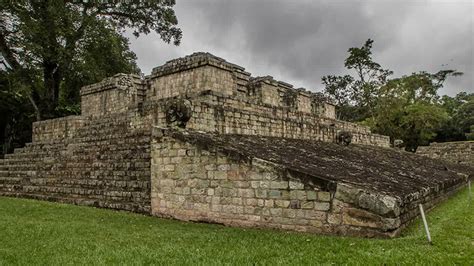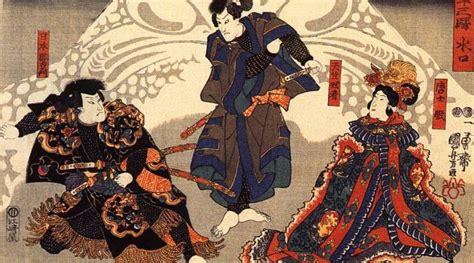Discover the origins, expansion, and rivalries of Genoa, its golden age of maritime power, and the reasons behind its decline and fall.
Origins and Foundation
Contents
The Republic of Genoa has a rich and storied history that dates back to ancient times. The city’s origins can be traced back to the 5th century BC when it was founded by the Ligurians, a Celtic tribe that inhabited the region. The settlement was strategically located on the Ligurian coast, allowing it to establish itself as a center for trade and commerce in the Mediterranean. Over the centuries, Genoa grew in both wealth and power, establishing itself as a formidable maritime republic.
As the city prospered, it began to attract a diverse population of merchants, sailors, and craftsmen from across the Mediterranean. This influx of people helped to shape the unique culture and identity of Genoa, as well as solidify its position as a leading maritime power in the region. The city’s foundation laid the groundwork for its future expansion and influence, setting the stage for the Republic of Genoa to emerge as a dominant force in the Mediterranean during the Middle Ages.
Genoa’s early history is marked by a series of conflicts and alliances with neighboring city-states, as well as with foreign powers such as the Byzantine Empire and the Holy Roman Empire. These struggles helped to shape the city’s political and military landscape, as well as its growing ambitions to expand its influence beyond the Italian peninsula. As Genoa continued to grow and evolve, its foundation as a maritime republic played a crucial role in shaping its destiny as a major player in Mediterranean trade and commerce.
In conclusion, the origins and foundation of the Republic of Genoa are deeply rooted in its ancient history and strategic location on the Mediterranean coast. The city’s early beginnings as a Celtic settlement set the stage for its future as a powerful maritime republic, as well as its enduring legacy as a leading center for trade, commerce, and culture in the Mediterranean.
Expansion and Trade Routes
The Republic of Genoa expanded its influence through the establishment of trade routes during the medieval period. As a powerful maritime city-state, Genoa sought to expand its trade network to increase its wealth and power. This expansion led the Republic to establish trade routes with other Mediterranean powers, such as the Byzantine Empire and the Islamic Caliphates. Through these trade routes, Genoa was able to import valuable goods such as spices, silks, and precious metals, which were in high demand in Europe.
Genoa’s trade routes extended as far as the Black Sea and the Levant, allowing the Republic to export its own goods, such as textiles, ceramics, and agricultural products. These trade routes were vital to the economic prosperity of Genoa, as they provided the city-state with access to lucrative markets and valuable resources.
Moreover, Genoa’s expansion and trade routes also allowed the Republic to establish footholds in key strategic locations, such as Cyprus and Crimea. These outposts served as important trading and military bases, enabling Genoa to project its power across the Mediterranean and defend its commercial interests. Through its extensive trade network, Genoa became one of the wealthiest and most influential maritime powers in the medieval world.
The expansion and maintenance of trade routes required the Republic to invest heavily in its maritime infrastructure, including the construction of fleets of trading and warships. Genoa also established trading colonies and warehouses along its trade routes, further solidifying its dominance in the Mediterranean commerce.
Rivalries with Venice and Pisa
The Republic of Genoa had a long history of rivalry with its neighboring maritime powers, Venice and Pisa. These rivalries often stemmed from competition for trade routes, control of strategic ports, and territorial disputes. Throughout the Middle Ages and the Renaissance, Genoa found itself in conflicts with both Venice and Pisa, as each city vied for dominance in the lucrative Mediterranean trade.
One of the major points of contention was the control of the lucrative spice trade, which was highly sought after by all three cities. Genoa, Venice, and Pisa all competed fiercely for control of key ports and trading posts along the Mediterranean coast, resulting in frequent clashes and diplomatic tensions.
In addition to economic competition, Genoa’s rivalry with Venice and Pisa also had significant political and military dimensions. The three cities often formed alliances and coalitions with other city-states and kingdoms, seeking to gain strategic advantages over their rivals. These shifting alliances and power struggles further fueled the tensions between Genoa, Venice, and Pisa.
The maritime conflicts between the Republic of Genoa and its rivals were not confined to the Mediterranean region. There were also confrontations in the Adriatic Sea and other maritime routes, as each city sought to expand its sphere of influence and deter the other from gaining too much power.
The rivalry with Venice and Pisa ultimately shaped the political and economic landscape of the Republic of Genoa, influencing its diplomatic policies, military strategies, and trade agreements. Despite the challenges posed by its powerful rivals, Genoa managed to maintain its position as a major player in Mediterranean trade and politics for centuries.
Golden Age of Maritime Power
The Republic of Genoa experienced its Golden Age of Maritime Power during the 12th and 13th centuries. As a major maritime and commercial power in the Mediterranean, Genoa’s prosperity during this time was largely due to its extensive trade network and naval dominance.
Genoa’s strategic location allowed it to establish trading outposts and colonies in various parts of the Mediterranean, as well as in the Black Sea and Crimea. The Genoese navy, comprised of powerful warships known as galleys, helped protect these trade routes and ensure the safety of Genoa’s maritime interests.
During this period, Genoa emerged as a leading maritime power, rivaling even the powerful city-states of Venice and Pisa. Its merchant fleet dominated the seas, and Genoese merchants were known for their shrewd business acumen.
The city’s skilled shipbuilders and navigators played a crucial role in expanding its maritime influence, as they were able to construct and man the ships that enabled Genoa’s commerce to flourish. Genoese traders were able to access goods from the East and bring them to the markets of Europe, contributing to the city’s economic prosperity and enriching its merchants and citizens.
Overall, the Golden Age of Maritime Power solidified Genoa’s position as a key player in the maritime trade of the Mediterranean and beyond, and the city’s influence and wealth continued to grow as a result.
Decline and Fall
The Republic of Genoa experienced a period of decline and eventual fall in the late 15th century, marking the end of its prominent maritime power and influence in the Mediterranean region. Several factors contributed to this decline, including internal political conflicts, external military threats, and economic challenges. The rise of other European powers, such as Spain and France, also played a significant role in the dwindling influence of Genoa in the international arena.
One of the major contributing factors to the decline of the Republic of Genoa was the constant internal strife and political rivalries among the ruling families and factions. This led to instability and weakened the government’s ability to effectively govern and protect the interests of the republic. This internal unrest made Genoa vulnerable to external threats and invasions, further hastening its decline as a maritime power.
Additionally, the emergence of new trade routes and the discovery of the Americas shifted the focus of international trade away from the Mediterranean, diminishing the strategic importance of Genoa as a trading hub. The city-state faced stiff competition from other European powers, particularly Venice and the emerging maritime empire of Portugal, further eroding its economic strength and influence in global trade.
Furthermore, the Republic of Genoa faced military conflicts with rival maritime republics, most notably Venice and Pisa. These prolonged and costly wars drained the resources and manpower of Genoa, weakening its military capabilities and further contributing to its eventual decline and fall. The loss of key territories and trading outposts also diminished the republic’s power and influence in the region.
By the late 15th century, the Republic of Genoa had been reduced to a shadow of its former self, with its maritime power and influence greatly diminished. The city-state eventually fell under the domination of foreign powers, marking the end of its independence and sovereignty. Despite its decline, the legacy of the Republic of Genoa continues to live on through its contributions to maritime trade, finance, and exploration during its golden age.












